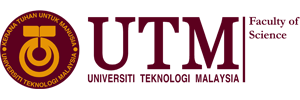Alginate/Gauze Incorporated with Hibiscus sabdariffa Linn. Extract as a Bioactive Agent for Wound Dressing Application
DOI:
https://doi.org/10.11113/jomalisc.v2.32Keywords:
Alginate, Hibiscus sabdariffa Linn, hydrogel, human dermal fibroblastAbstract
In recent years, the development of wound dressings has changed from a passive to an active form by adding antiseptic agents such as polyvinylpyrrolidone (PVPI) and nanoparticles such as silver nanoparticles to facilitate the wound healing process. However, PVPI is toxic to human skin fibroblasts, and silver nanoparticles may result in metal accumulation in the tissues due to their nanosize. Therefore, a new approach to using natural sources from plants such as Hibiscus sabdariffa Linn. (HSL) is promising due to its phytochemical constituents that can serve as a potential therapeutic agent in wound dressings. In this study, freeze-dried alginate/gauze (FDA/gauze) without and with HS extract and calcium alginate/gauze (CA /gauze) with and without HS extract were developed by freeze-drying and gelation, respectively. This study aimed to characterize the properties of alginate/gauze-dressings as wound dressings. The morphology of the designed dressing; FDA/gauze, looks evenly distributed on the surface of the gauze compared to CA/gauze. It was found that FDA/gauze dressings have higher water absorbency than CA /gauze dressings, ranging from 690.43 to 1340.86% from day 1 until day 14. The percentage of water uptake ability increases as the concentration of alginate increases. In addition, the seeded human skin fibroblasts' growth on the alginate/gauze dressings infused with HSL extract growth in clustered, bright, and colourless proves that the cells were viable. Thus, the addition of HSL extract shows to support the process of cell viability.
References
Abdallah, E. M. (2016). Antibacterial efficiency of the Sudanese Roselle (Hibiscus sabdariffa L.), a famous beverage from Sudanese folk medicine. Journal of Intercultural Ethnopharmacology. 5(2), 186.
Aderibigbe, B. A., & Buyana, B. (2018). Alginate in wound dressings. Pharmaceutics. 10(2), 42.
Alshami, I., & Alharbi, A. E. (2014). Hibiscus sabdariffa extract inhibits in vitro biofilm formation capacity of Candida albicans isolated from recurrent urinary tract infections. Asian Pacific Journal of Tropical Biomedicine. 4(2), 104-108.
Andersen, T., Auk-Emblem, P., & Dornish, M. (2015). 3D Cell Culture in Alginate Hydrogels. Microarrays (Basel).4(2), 133-161.
Bagher, Z., Ehterami, A., Safdel, M. H., Khastar, H., Semiari, H., Asefnejad, A., Davachi, S. M., Mirzaii, M. and Salehi, M. (2020). Wound healing with alginate/chitosan hydrogel containing hesperidin in rat model. Journal of Drug Delivery Science and Technology. 55, 101379.
Bahadoran, M., Shamloo, A., & Nokoorani, Y. D. (2020). Development of a polyvinyl alcohol/sodium alginate hydrogel-based scaffold incorporating bFGF-encapsulated microspheres for accelerated wound healing. Scientific Reports. 10(1), 1-18.
Bhardwaj, N., Chouhan, D., & Mandal, B. B. (2018). 3D functional scaffolds for skin tissue engineering. in Functional 3D tissue engineering scaffolds (pp. 345-365). Woodhead Publishing.
Bohari, S. P., Hukins, D. W., & Grover, L. M. (2011). Effect of calcium alginate concentration on viability and proliferation of encapsulated fibroblasts. Bio-Medical Materials and Engineering, 21(3), 159-170.
Borrás-Linares, I., Fernández-Arroyo, S., Arráez-Roman, D., Palmeros-Suárez, P. A., Del Val-Díaz, R., Andrade-Gonzáles, I., Fernández-Gutiérrez, A., Gómez-Leyva, J. F. and Segura-Carretero, A. (2015). Characterization of phenolic compounds, anthocyanidin, antioxidant and antimicrobial activity of 25 varieties of Mexican Roselle (Hibiscus sabdariffa). Industrial Crops and Products. 69, 385-394.
Catanzano, O., D’esposito, V., Acierno, S., Ambrosio, M.R., De Caro, C., Avagliano, C., Russo, P., Russo, R., Miro, A., Ungaro, F. and Calignano, A. (2015). Alginate–hyaluronan composite hydrogels accelerate wound healing process. Carbohydrate polymers. 131, 407-414.
Chen, H., Xing, X., Tan, H., Jia, Y., Zhou, T., Chen, Y., Ling, Z. and Hu, X. (2017). Covalently antibacterial alginate-chitosan hydrogel dressing integrated gelatin microspheres containing tetracycline hydrochloride for wound healing. Materials Science and Engineering: C. 70, 287-295.
Golafshan, N., Rezahasani, R., Esfahani, M. T., Kharaziha, M., & Khorasani, S. (2017). Nanohybrid hydrogels of laponite: PVA-Alginate as a potential wound healing material. Carbohydrate Polymers. 176, 392-401.
He, Y., Wu, Z., Tu, L., Han, Y., Zhang, G., & Li, C. (2015). Encapsulation and characterization of slow-release microbial fertilizer from the composites of bentonite and alginate. Applied Clay Science. 109, 68-75.
Kamoun, E. A., Kenawy, E.-R. S., & Chen, X. (2017). A review on polymeric hydrogel membranes for wound dressing applications: PVA-based hydrogel dressings. Journal of Advanced Research, 8(3), 217-233.
Kong, F., Fan, C., Yang, Y., Lee, B. H., & Wei, K. (2019). 5-hydroxymethylfurfural-embedded poly (vinyl alcohol)/sodium alginate hybrid hydrogels accelerate wound healing. International Journal of Biological Macromolecules. 138, 933-949.
Lencina, M. S., Ciolino, A. E., Andreucetti, N. A., & Villar, M. A. (2015). Thermoresponsive hydrogels based on alginate-g-poly (N-isopropylacrylamide) copolymers obtained by low doses of gamma radiation. European Polymer Journal. 68, 641-649.
Malacrida, A., Maggioni, D., Cassetti, A., Nicolini, G., Cavaletti, G., & Miloso, M. (2016). Antitumoral effect of Hibiscus sabdariffa on human squamous cell carcinoma and multiple myeloma cells. Nutrition and cancer. 68(7), 1161-1170.
Mohandas, A., Sudheesh Kumar, P., Raja, B., Lakshmanan, V.-K., & Jayakumar, R. (2015). Exploration of alginate hydrogel/nano zinc oxide composite bandages for infected wounds. International journal of nanomedicine. 10(Suppl 1), 53.
Montanucci, P., Terenzi, S., Santi, C., Pennoni, I., Bini, V., Pescara, T., Basta, G. and Calafiore, R. (2015). Insights in behavior of variably formulated alginate-based microcapsules for cell transplantation. BioMed Research International. 2015.
Oh, G.-W., Nam, S. Y., Heo, S.-J., Kang, D.-H., & Jung, W.-K. (2020). Characterization of ionic cross-linked composite foams with different blend ratios of alginate/pectin on the synergistic effects for wound dressing application. International Journal of Biological Macromolecules. 156, 1565-1573.
Peng, C.-W., Lin, H.-Y., Wang, H.-W., & Wu, W.-W. (2012). The influence of operating parameters on the drug release and anti-bacterial performances of alginate wound dressings prepared by three-dimensional plotting. Materials Science and Engineering: C. 32(8), 2491-2500.
Portillo-Torres, L.A., Bernardino-Nicanor, A., Gómez-Aldapa, C.A., González-Montiel, S., Rangel-Vargas, E., Villagómez-Ibarra, J.R., González-Cruz, L., Cortés-López, H. and Castro-Rosas, J. (2019). Hibiscus acid and chromatographic fractions from Hibiscus sabdariffa calyces: Antimicrobial activity against multidrug-resistant pathogenic bacteria. Antibiotics. 8(4), 218.
Riaz, G., & Chopra, R. (2018). A review on phytochemistry and therapeutic uses of Hibiscus sabdariffa L. Biomedicine & Pharmacotherapy. 102, 575-586.
Saarai, A., Sedlacek, T., Kasparkova, V., Kitano, T., & Saha, P. (2012). On the characterization of sodium alginate/gelatine‐based hydrogels for wound dressing. Journal of Applied Polymer Science. 126(S1), E79-E88.
Shadhan, R. M., & Bohari, S. P. M. Effects of Hibiscus sabdariffa Linn. fruit extracts on a-glucosidase enzyme, glucose diffusion and wound healing activities. Cell. 19, 20.
Sikareepaisan, P., Ruktanonchai, U., & Supaphol, P. (2011). Preparation and characterization of asiaticoside-loaded alginate films and their potential for use as effectual wound dressings. Carbohydrate Polymers. 83(4), 1457-1469.
Sobhanian, P., Khorram, M., Hashemi, S. S., & Mohammadi, A. (2019). Development of nanofibrous collagen-grafted poly (vinyl alcohol)/gelatin/alginate scaffolds as potential skin substitute. International Journal of Biological Macromolecules, 130, 977-987.
Summa, M., Russo, D., Penna, I., Margaroli, N., Bayer, I.S., Bandiera, T., Athanassiou, A. and Bertorelli, R. (2018). A biocompatible sodium alginate/povidone iodine film enhances wound healing. European Journal of Pharmaceutics and Biopharmaceutics, 122, 17-24.
Sun, J., & Tan, H. (2013). Alginate-based biomaterials for regenerative medicine applications. Materials, 6(4), 1285-1309.
Wan, Y., Chen, X., Xiong, G., Guo, R., & Luo, H. (2014). Synthesis and characterization of three-dimensional porous graphene oxide/sodium alginate scaffolds with enhanced mechanical properties. Materials Express. 4(5), 429-434.


















